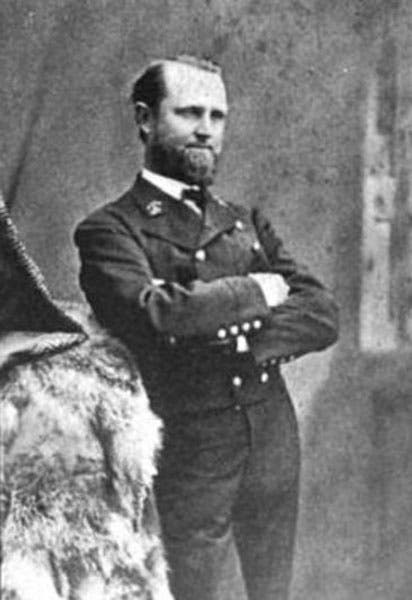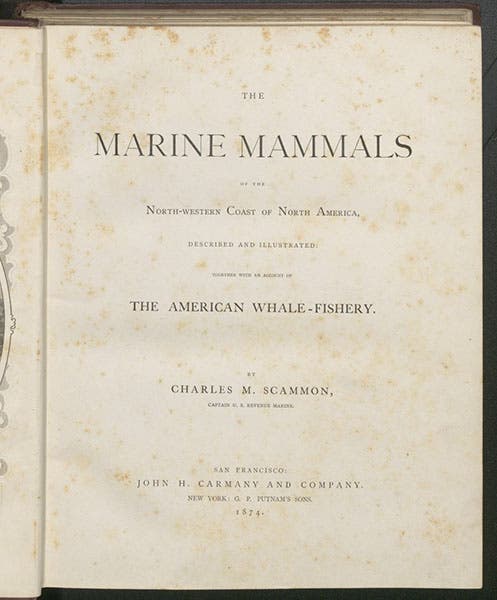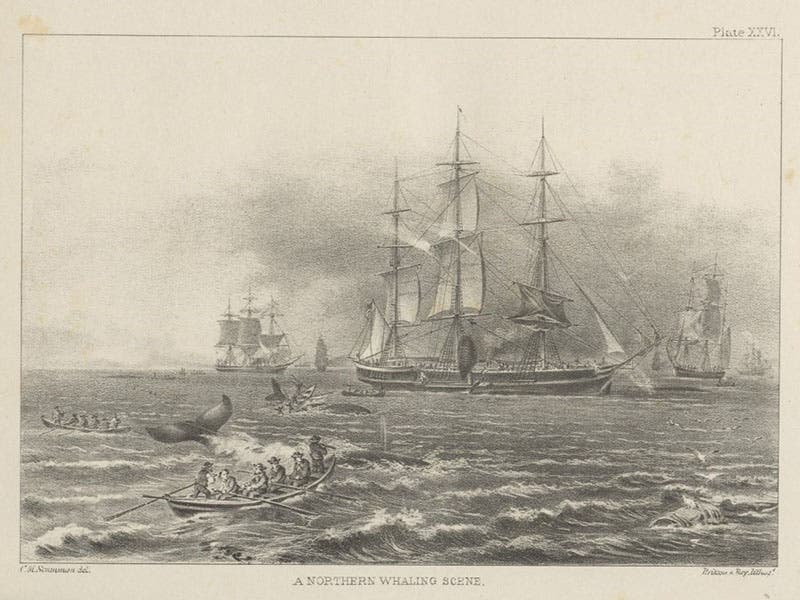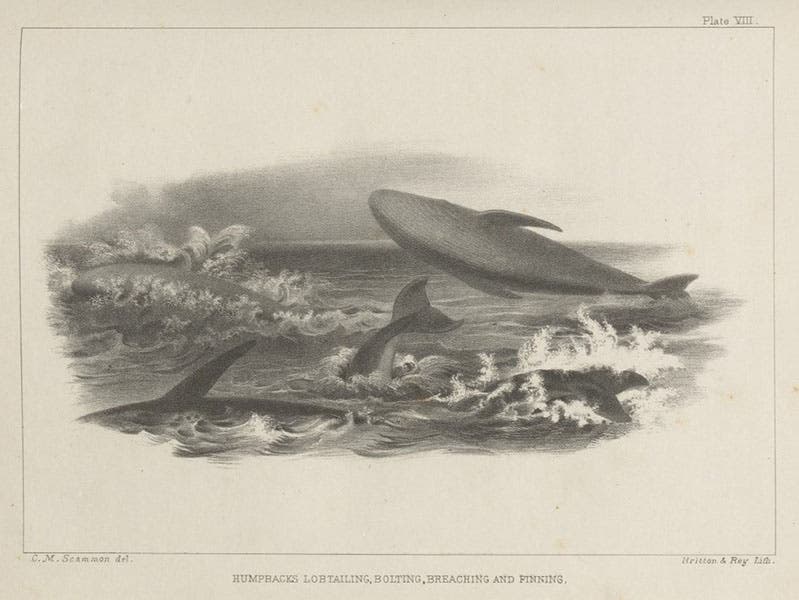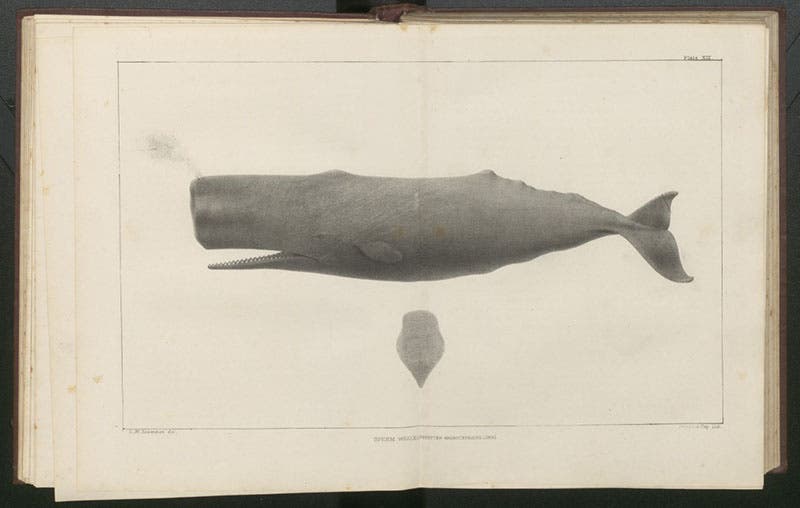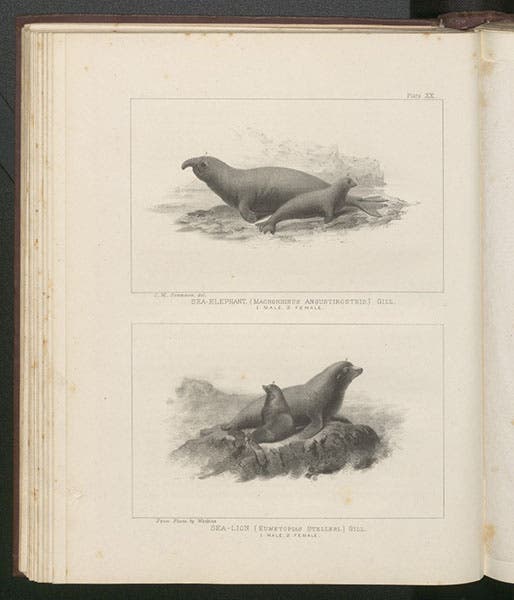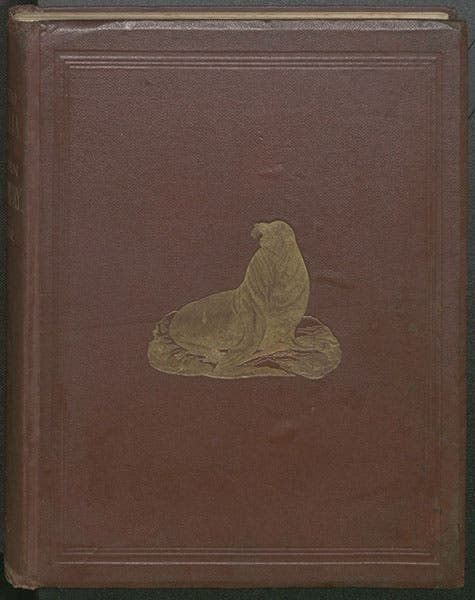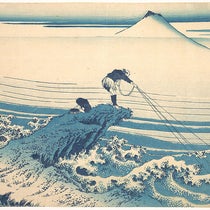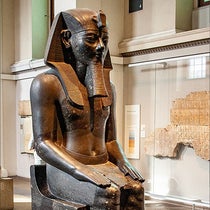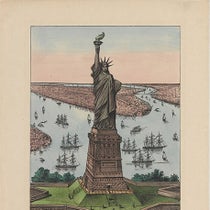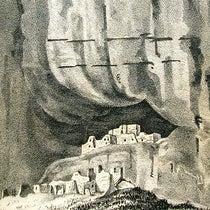Scientist of the Day - Charles Scammon
Charles Melville Scammon, an American sea captain, was born May 28, 1825. Scammon was born and raised in Maine, and as his middle name would seem to fore-ordain, he became a whaler (although, admittedly, Herman, at the time of Charles' birth and christening, was only 5 years old). After the California Gold Rush began, Scammon accepted an offer in 1849 to take a ship full of would-be bullionaires around the Horn and deliver it to San Francisco. 17,000 miles and 186 days later, in February of 1850, Charles sailed through the Golden Gate with his ship, and he never looked back. There were many opportunities for competent ship captains in California, and Scammon seems to have been uncommonly good at his job, so he never lacked for a ship. For 11 years he hunted whales up and down the California coast, and he even discovered one of the principal spawning grounds of the grey whale, halfway down the Baja peninsula, which is still called, by Americans anyway, Scammon's lagoon. Scammon was never ashamed of the way he earned a living – very few were in the days when whales were abundant and the market was quite lucrative – but he differed from most other whalers in that he took little pleasure in killing them, but great pleasure in studying them. He was not so much interested in their anatomy as the way they lived: how they swam and gave birth, their migration habits, their reactions to predators. He took notes on whales and their pinniped kin for all those years, although he had no plans at first to do anything with his observations.
The whales ran out, to no one's great surprise, especially not Scammon’s, but he had planned for this, and in 1861 he entered the U.S. Revenue Marine, the distant predecessor of the Coast Guard. At that time, the United States had one ship, a steam cutter, stationed on the West Coast, and in 1863, Scammon took command of it. The Civil War occupied most everyone's attention at the time, but in 1865, Scammon managed to get attached to what seemed to be a very promising enterprise, the Western Union Telegraph Expedition. Entrepreneurs had been trying to lay an Atlantic cable for ten years, without success. But by 1865, there was a land telegraph line extending from New York and Washington to San Francisco, and there was also one extending from Moscow across Asia to Kamchatka, so it occurred to some venture capitalist that if they ran wires up to Alaska, across the narrow Bering Strait, and then into Russia, there was a much better chance of success. Scammon was appointed Captain of Marine for the Expedition and was responsible for ferrying men and goods up the Alaskan coast and down the other side of the Bering Sea. Everything went fine for a year and a half, and the enterprise would probably have succeeded, except for the unfortunate fact that the Atlantic Cable of 1866 was a success, and not only that, they repaired the 1865 cable, so they now had two transatlantic cables. The Alaskan cable was suddenly redundant, and the Alaskan telegraph project was almost immediately abandoned.
It was about this time, as he returned to the Revenue Marine, that Scammon discovered organized science. In 1867, he was invited to a meeting of the California Academy of Science, the first scientific society west of the Mississippi. People read papers on animals and plants and ores, and he realized that what he had been doing for 15 years was cetacean zoology. He read a few papers of his own and they were well received. He also began writing for San Francisco's first literary magazine, the Overland Monthly, which had the likes of Mark Twain and Bret Harte in its stable. The Overland Monthly, much later, in a retrospective, gave us one of our few portraits of Captain Scammon (second image).
Finding writing to his liking, Scammon decided to put all his knowledge of whales into a book. The result was The Marine Mammals of the North-western Coast of North America, which was published in 1874 in San Francisco by the publisher of the Overland Monthly. It contained 27 plates of whales, dolphins, and seals and just as many text drawings and diagrams. The plates are often described as engravings, but they are lithographs. All of the whale species of the Pacific Coast are described, a few for the first time, and many are illustrated.
Scammon's book found very few buyers or readers at the time – he was hardly a known authority as a zoologist, and he was far removed from the East Coast scientific establishment – but it has since been recognized as a classic of cetacean studies, and it was even reissued in facsimile in 1968.
There are three great whaler writers. William Scoresby, Jr. is one, and we have his two books on the whale-fisheries of the northern Atlantic (1820 and 1823) in our collections. We are unlikely to acquire anything by the second author, since any one of Herman Melville's books, in their first editions, would far exceed our annual budget, and they are not really in scope anyway. Scammon's book we only acquired in 2016, and it is a splendid copy, in its handsome slipcase, with a different kind of gold seal on the cover (eighth image, above). We didn’t know where to stop when choosing images to reproduce here, so we almost didn’t; there are still others we wanted to include.
Scammon died at the age of 85 in 1911, and is buried in Evergreen Cemetery in Oakland, California. If he has a gravestone, I was unable to locate a photograph.
Dr. William B. Ashworth, Jr., Consultant for the History of Science, Linda Hall Library and Associate Professor emeritus, Department of History, University of Missouri-Kansas City. Comments or corrections are welcome; please direct to ashworthw@umkc.edu.


